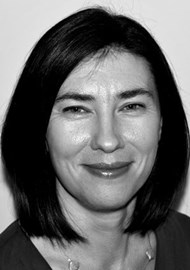Expert reconstruction of nasal sidewall defects requires careful selection of techniques across nasal layers, balancing aesthetics, structural support and patient needs.
When reconstructing a nasal skin defect, a variety of factors should be taken into account in order to achieve the best results. In the majority of cases, the repair is achieved by using autologous tissues (i.e. grafts or flaps) whilst homologous grafts (e.g. cadaveric cartilage) may be needed in some scenarios. The nose should be reconstructed with each layer in mind: the outer, middle and inner layers.
Outer layer
Skin flaps and grafts are mainly used to repair the sidewall, although secondary intention may be indicated in small concave defects such as nasal sidewall at the inner canthus and the alar-facial groove. Skin grafts can be used when adequate vascular bed is available and the area is away from the mobile structures, as skin graft contracture could result in deformity. Skin grafts often result in an inferior aesthetic outcome due to the difference in skin texture, colour and thickness in comparison to the original nasal skin. Skin flaps are therefore a better option in repairing the sidewall, especially when cartilaginous support is added at the same time.
Nasal skin is divided into several topographical subunits: tip, dorsum, sidewalls, alar lobules, and soft triangles. When a large portion of the subunit (often larger than half the subunit) is missing, replacing the entire subunit results in a better aesthetic outcome [1]. Although this might result in a better aesthetic outcome in reconstruction of the tip and alar total subunits (due to trapdoor effect and the placement of incisions at the subunit borders), the sidewall and the dorsum subunits are more forgiving and the same rule may not apply to them.
Location of the skin defect will have an impact on the choices available for repair as the nasal skin quality is different in terms of thickness and mobility. Generally the skin on the nasal tip and ala is thicker, more sebaceous and less mobile, whereas the rest of the nasal skin on the sidewall and dorsum is more mobile and less sebaceous. As a result, the total reconstruction of the tip and alar subunits may be better achieved with a staged pedicle flap (from the cheek or forehead) whereas the dorsum and sidewall defects are often amenable to a variety of one-stage techniques, such as advancement flaps and transposition flaps. Cheek skin reservoir is one of the main sources for nasal sidewall skin repair and it can be combined with an advancement flap from the dorsum and the opposite sidewall [2] (Figure 1).


Figure 1: (Top) Lesion on the left nasal sidewall marked with the safety margin of the excision and the incision lines for bilateral advancement flap; (Bottom) postop results three months after surgery.
Middle layer
The structural support of the nose is mainly provided by the bone and the lateral cartilages as well as connective tissues. Cartilage grafts are the main tissues used to provide support for the reconstructed nose and they are often used both as anatomic and non-anatomic grafts when repairing the nasal sidewall and the ala (Figure 2).

Figure 2: Anatomic and non-anatomic grafts on the left nasal sidewall.
The sidewall grafts can be secured to the surrounding bone and cartilage but when the dorsal structural support is deficient, it needs to be reconstructed first, either at the primary stage or at a delayed stage to provide the platform for anchoring the sidewall support mechanisms.
Inner layer
While small defects may be amenable to turnover flaps from the adjacent skin, larger defects require more sophisticated techniques to reconstruct the inner layer.
Septal mucosa is a valuable source for inner layer reconstruction and it allows simultaneous primary cartilage graft insertion for structural support. Vascularised flaps for the inner lining are generally either cephalically based on nasoseptal artery, caudally based on the septal branch of the superior labial artery, or anteriorly based on the anterior ethmoid artery. Creating a septal window allows employing the opposite anterior ethmoid artery-based flaps to achieve a greater length and to cover larger defects.
The paramedian forehead flap (PMFF) can also be used as a full thickness flap in three stages to reconstruct a full thickness defect (with delayed cartilage grafting at the second stage). The PMFF can also be used as a prefabricated flap (incorporating skin graft and / or cartilage) to reconstruct a large full thickness defect.
While the above techniques provide us with a tool box to reconstruct the majority of nasal defects with autologous tissues, reconstruction of larger defects (e.g. after rhinectomy) will certainly challenge the reconstructive surgeon and put the patient under immense physical and emotional stress. In such cases where staged reconstruction is not deemed suitable or possible, nasal prosthesis provides the patients with an alternative.
Nasal prosthesis
There may be times when reconstructing the nose is not the best option. There are many reasons for this decision. Patient choice is always important and some people will want the most straightforward solution. We also need to consider the patient’s fitness to undergo a lengthy, complex and often multiple-staged reconstructive process. The balance between function and cosmesis is also important. At times, it can be very difficult to provide well a vascularised tissue which mimics the natural support of the nose whilst keeping the tissue thin enough, so the nostril is not blocked.
A good prosthetics team can do wonders. The options range from relatively small prosthetics, which might be glued on to cover smaller defects on the alar, sidewall, or tip of the nose, to larger ones that can form a new columella and support the remnants of the nose — up to a total nasal prosthesis, which can be retained with glue or implants.
When siting implants, you need to consider the bone quality and any residual nasal tissue. Ideally a nasal prosthesis is retained on three implants, but sometime bone quality is poor, so it can be held in place just by two (or even one!). Preoperative CT imaging can be used to plan the implant sites. If you are aiming for a partial prosthesis, remember that the contours of the soft tissue can change quite a lot during the healing process. Angling the implants correctly is important as your prosthetic team will need to be able to screw the magnets on and off. It really helps if the prosthetics team join you for the planning and operation so that you get the best outcome for your patient. The implants can be put in at the time of resection and buried if a patient is having radiotherapy. They can be uncovered under a short local anaesthetic procedure when the patient is ready. It generally takes about eight weeks for the implants to osseointegrate before the team will change the healing caps to magnets and start loading them with a prosthesis (Figure 3).


Figure 3:(Top) Post-rhinectomy patient with abutments in situ; (Bottom) nasal prosthesis mounted on the abutments.
During the interim, the patient wears a white profile dressing which has a nose-like shape. The prosthesis is made as close to the patient’s original nose shape and colouring as possible, including having a winter and summer nose to match changing skin tones throughout the year [3,4].
Whichever option a patient chooses, they will be supported through the process. The psychological impact of losing part of the nose and having a prosthesis should not be underestimated. These will be the patients you keep for life and you will be with them and their family through all the lows and, hopefully, the highs.
References
1. Burget GC, Menick FJ. The subunit principle in nasal reconstruction. Plast Reconstr Surg 1985;76(2):239–47.
2. Deutsch P, Limbrick J, Anari S. A-T Flap for Reconstruction of Nasal Dorsum Skin Defects. Facial Plast Surg 2024;40(4):493–8.
3. Shokrollahi K, Whitaker I, Nahai F. Flaps: Practical Reconstructive Surgery New York, USA; Thieme; 2017.
4. Jones NS. Techniques of nasal reconstruction. Br J Hosp Med (Lond) 2006;67(11):578–82.
Declaration of competing interests: None declared.









